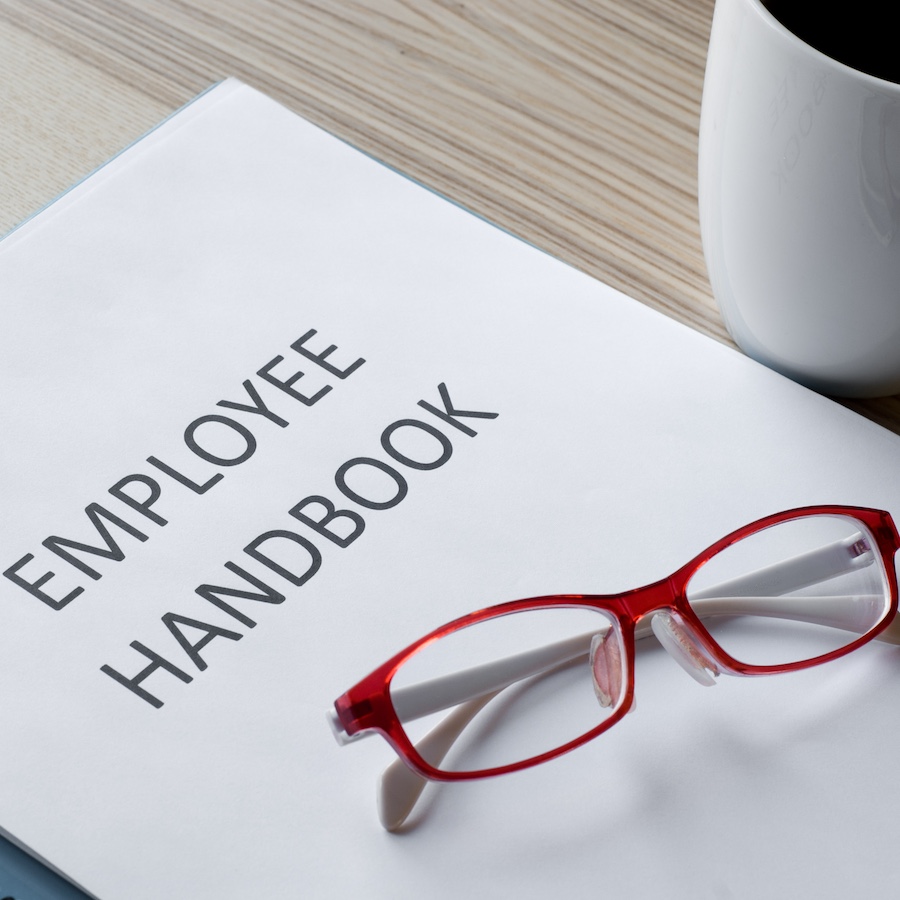Why Having an Updated Employee Handbook is Crucial to Your Company
Often overlooked or hastily assembled, the employee handbook is the cornerstone of organizational culture, compliance, and employee relations. As a Human Resources Consultant with extensive experience in guiding and assisting companies through the process of creating effective employee handbooks.
Before diving into the tips, let’s briefly discuss what could happen without a well-maintained employee handbook. Lacking this key resource can lead to inconsistencies in enforcing company policies, misunderstandings between staff and management, and increased legal risks. In today’s fast-evolving business environment, staying updated is not just recommended; it’s essential.

employee handbook
Start with Compliance in Mind: Employee handbooks serve as a legal safeguard, outlining rights, responsibilities, and company policies. It’s imperative to begin with a comprehensive understanding of federal, state, and local employment laws. From anti-discrimination regulations to wage and hour laws, ensure that your handbook aligns with current legislation. Failure to do so can result in costly legal battles, tarnished reputation, and diminished employee trust. By prioritizing compliance, you not only mitigate risks but also foster an environment of transparency and fairness.
Tailor Policies to Reflect Organizational Values: Your employee handbook is more than a mere compilation of rules; it’s a reflection of your company’s ethos. Infuse it with your organization’s mission, vision, and core values. Consider how each policy resonates with your company culture and contributes to a positive work environment. Whether it’s promoting diversity and inclusion or championing work-life balance, align policies with your overarching principles. A handbook imbued with organizational values not only engages employees but also cultivates a sense of belonging and purpose.
Keep it Clear, Concise, and Accessible: In an age inundated with information, brevity is a virtue. Strive for clarity and simplicity in your handbook’s language and structure. Avoid jargon and legalese, opting instead for plain language that is easily understood by all employees. Break down complex policies into digestible segments and supplement text with illustrative examples or FAQs. Furthermore, ensure accessibility by providing both digital and print versions of the handbook. A user-friendly document enhances comprehension, reduces misunderstandings, and empowers employees to navigate workplace policies with confidence.
Embrace Flexibility and Adaptability: In today’s dynamic business landscape, adaptability is key. Your employee handbook should not be static but rather dynamic, capable of evolving alongside changing organizational needs and external regulations. Incorporate flexibility into your policies to accommodate unforeseen circumstances or emerging trends. Regularly review and update the handbook to reflect industry best practices and regulatory changes. By embracing flexibility, you demonstrate agility and responsiveness, fostering a culture of continuous improvement and innovation.
Educate and Empower Employees: An effective employee handbook serves as a guiding compass for employees, providing clarity on expectations and protocols. However, its efficacy hinges on employees’ understanding and engagement. Prioritize thorough onboarding and ongoing training to familiarize employees with the handbook’s contents. Encourage open dialogue and address any questions or concerns promptly. Additionally, empower employees to contribute to the handbook’s refinement through feedback mechanisms or suggestion channels. By fostering a culture of mutual respect and collaboration, you cultivate a workforce that is informed, empowered, and aligned with organizational goals.
Crafting an effective employee handbook is a multifaceted endeavor that demands attention to detail, foresight, and adaptability. By prioritizing compliance, reflecting organizational values, ensuring clarity and accessibility, embracing flexibility, and educating employees, HR leaders can cultivate a culture of trust, accountability, and success. Remember, an up-to-date employee handbook isn’t just a regulatory requirement—it’s a blueprint for organizational excellence and employee empowerment.
If you’d like help with your employee handbook, reach out to me here or connect with me on LinkedIn.
